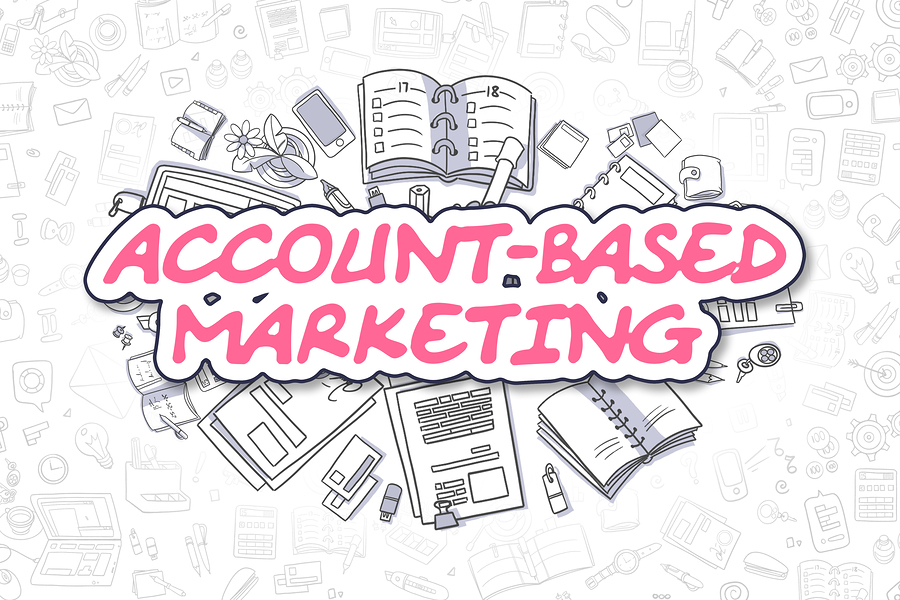
6 Steps to Crushing Your Account-Based Marketing Framework
Account-based marketing (ABM) is a hot topic these days, and it’s quickly becoming the B2B marketing strategy of choice. Our clients have been asking for an account-based marketing framework, and we have been delivering. Now it’s time to share with you what we’ve learned.
What is an account-based marketing framework?
It’s identifying individuals or accounts and marketing to them as their own “micro-market”. So each account becomes its own unique “universe” of prospects to whom you can target. It means taking all of your unique personas and targeting them as unique persons. It means targeting a single company, like Microsoft, as a single company with assets and copy that says stuff like “Microsoft, See How We Reinvent Digital Marketing Every Minute”. With ABM, the point is to personalize and customize your messages either to a particular persona or account.
Why is account-based marketing effective for B2B sales?
Two words: lead quality. Businesses that utilize account-based marketing are quickly focusing all of their sales and marketing efforts on attracting, converting, and tracking the highest value clients. This strategy can drive revenue across the board!
Ready to dive into account-based marketing?
Follow our simple 6-step guide to account-based marketing so you can start shaking the money tree!
1. Get on the same page
Account-based marketing isn’t exclusively a marketing function. The most effective campaigns are usually a joint effort. In order to effectively implement this strategy, you need collaboration and input from multiple teams in your organization — especially sales!
Have an outstanding beef with your sales team? Time to hash it out now. You cannot be good at ABM unless there is alignment with the sales and marketing team. Sales is on the phone with potential leads all day long, so they definitely know which accounts are best to go after. They also know a lot about a business’s initiatives, organizational structure, personnel, and technologies. Marketing can leverage these insights to engage target accounts and get them to convert!
Both marketing and sales share one goal: Drive revenue. However, they tend to butt heads because they have their eyes focused on different metrics and short term goals, and because of the perceived divide between marketing and sales in the traditional sales and marketing funnel. You need to encourage both teams to to look at the sales funnel as one process rather than two.
2. Identify dream accounts
Account-based marketing techniques are used by b2b marketers for the sole purpose of focusing their time and resources on a relatively small number of accounts that have the greatest value potential. So finding the perfect accounts to target is a darn important step, and if you get it right, you’ll get the most return.
This means you can’t just get away with asking the CEO which accounts to go after. You need to dig much deeper and do some research. What companies can benefit the most from your products or services? How big are they in terms of employees? What does that say about their purchase decision process? What is their expected revenue? Where are they located? Are they using your competitor’s products? What is their projected lifetime value? Likelihood of churning? These are questions you need to consider before you start to narrow down your list.
3. Research like you mean it
In account-based marketing, you’ll get the opportunity to tailor your messages to specific members in the decision making process. Now that you know which accounts to target, you need to stalk, er, research your audiences and develop detailed personas.
Here are some questions you should ask yourself:
- How many people are involved in the decision making process?
- Who are the key decision makers and influencers?
- What are there hobbies?
- What makes them tick?
- What keeps them up at night?
- What are they reading in the morning?
Knowing things like this about the individuals you’re going after will allow you to align your messaging in a way that will resonate with them.
4. Sway ‘em with your words
We hope you did some good research because now it’s time to put that to use. Use everything you know about the company or decision maker to personalize all of the content you want them to see. You need to whip up sales and marketing collateral that’s going to resonate with your audience and compel them to take action. This includes things like blog posts, eBooks, emails, webinars, whitepapers — you name it — all targeted to the prospect’s stage along the buyer journey. This is the fire in your engine that will propel all of your sales and marketing efforts forward!
5. Bring ‘em out, bring ‘em out
You’ve worked hard to identify your target accounts and tailor your content to them, good job! Now it’s time to engage those people by placing the personalized content across channels they’re most likely to use.
Ever heard of the saying “never put all of your eggs in one basket”? Keep that in mind when you’re formulating your account-based marketing strategy. Different buyers will respond to different channels so you need to spread out your budget accordingly. These channels could include everything from email to phone calls to blogs to social posts, but be careful — pick the wrong channel and you’ll waste tons of time, effort and money for nothing to show. A tactic that we use often to help ease the risk of wasting money on unsuccessful channels is to start with a small budget and tweak campaigns iteratively until we see quality leads coming. Then we open up the budget floodgates, push leads deeper down the sales and marketing funnel, and watch the magic happen.
6. Be wise & optimize
Just like with any other b2b sales and marketing campaign, you need to measure the success of your efforts and see what impact it is having on your revenue growth. You need to figure out what’s working and what’s not. Cut the stuff that isn’t driving revenue and put money behind the stuff that is. Remember a lot of times, campaigns like this take some time to bear fruit. Persist relentlessly.
Conclusion
Ditch traditional b2b marketing efforts, and say hello to account-based marketing for a more personalized approach. Account-based marketing adds value to your business as it allows you to focus your time and resources on accounts that are more likely to convert and drive more revenue. Follow this account-based marketing framework to turn your b2b sales and marketing campaigns into money markers that close.
Need some help? Click here to schedule a consultation with one of our account-based marketing experts.
Read about measuring B2B marketing effectiveness
View all posts filed under “Advertising”
Most newsletters suck...
So while we technically have to call this a daily newsletter so people know what it is, it's anything but.
You won't find any 'industry standards' or 'guru best practices' here - only the real stuff that actually moves the needle.








